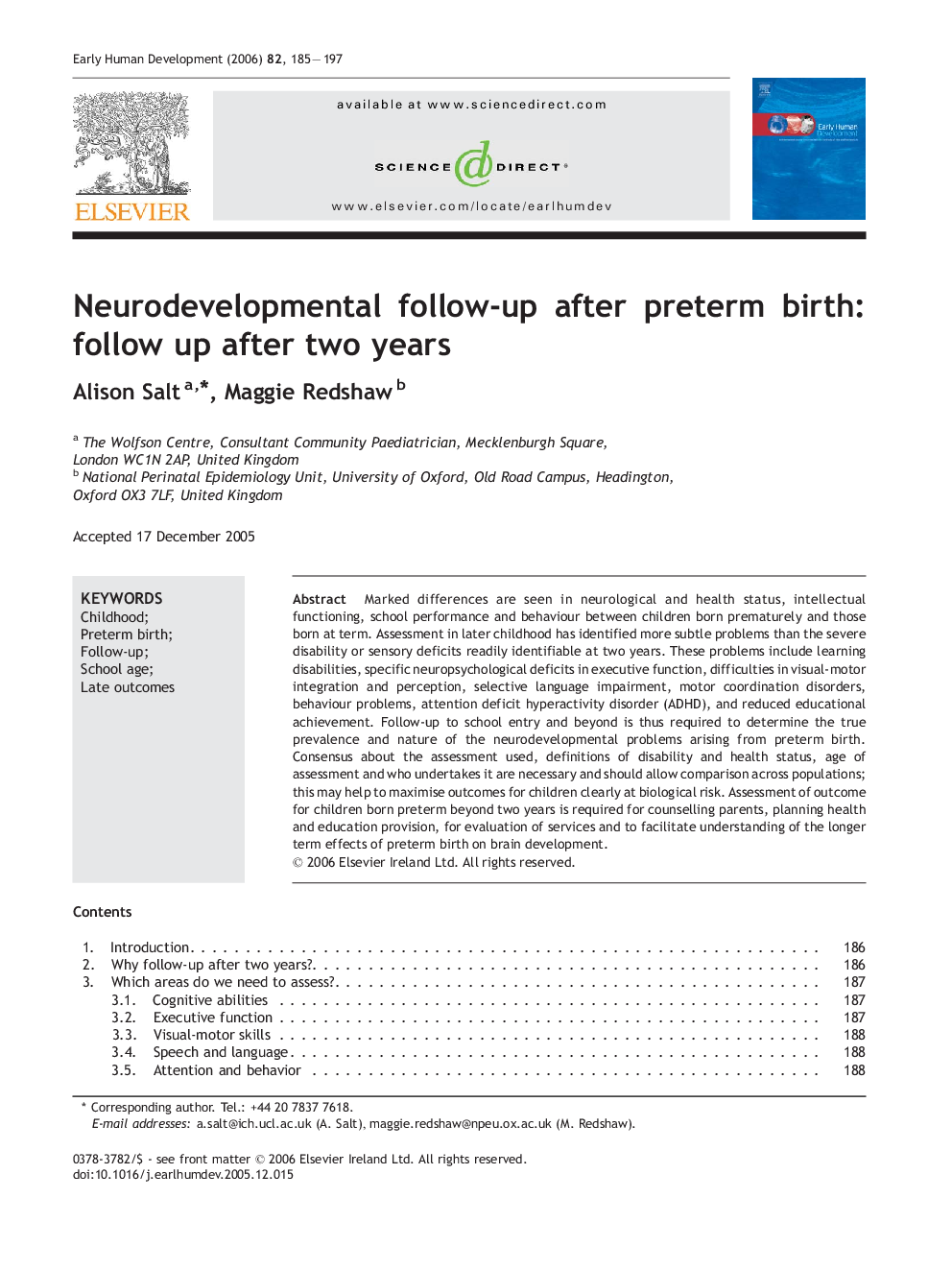| Article ID | Journal | Published Year | Pages | File Type |
|---|---|---|---|---|
| 3918417 | Early Human Development | 2006 | 13 Pages |
Marked differences are seen in neurological and health status, intellectual functioning, school performance and behaviour between children born prematurely and those born at term. Assessment in later childhood has identified more subtle problems than the severe disability or sensory deficits readily identifiable at two years. These problems include learning disabilities, specific neuropsychological deficits in executive function, difficulties in visual-motor integration and perception, selective language impairment, motor coordination disorders, behaviour problems, attention deficit hyperactivity disorder (ADHD), and reduced educational achievement. Follow-up to school entry and beyond is thus required to determine the true prevalence and nature of the neurodevelopmental problems arising from preterm birth. Consensus about the assessment used, definitions of disability and health status, age of assessment and who undertakes it are necessary and should allow comparison across populations; this may help to maximise outcomes for children clearly at biological risk. Assessment of outcome for children born preterm beyond two years is required for counselling parents, planning health and education provision, for evaluation of services and to facilitate understanding of the longer term effects of preterm birth on brain development.
